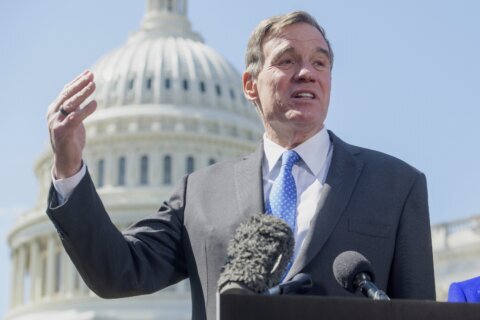This article was republished with permission from WTOP’s news partner InsideNoVa.com. Sign up for InsideNoVa.com’s free email subscription today.
This article was written by WTOP’s news partner, InsideNoVa.com, and republished with permission. Sign up for InsideNoVa.com’s free email subscription today.
Prince William County is eying what to do next with its slice of the $50 billion coming from opioid-related lawsuit settlements, with new plans to partner with Manassas, Manassas Park and George Mason University on its new opioid addiction center.
The county is eligible for $4.3 million in a direct distribution from the Virginia Opioid Abatement Authority, which was established by the General Assembly to disburse the commonwealth’s portion of two major opioid settlements. It can also receive an additional $1.9 million for meeting certain other standards for use of the funds. From those two allotments, the county is estimated to receive $350,000 annually from the state authority for the next 18 years.
From a third tranche of money, the county is looking for $1.4 million to partner with the two cities and George Mason for a new Mason Empowerment Center, which the university recently announced would receive $1 million in federal earmarks to get off the ground. According to their application for funding to the VOAA, the three cities would go in on a new community opioid coordinator, which would coordinate the opioid response efforts in the Prince William region and collect data on those efforts.
In a separate application, the three localities and Mason would set up a “peer recovery pipeline” meant to “train and develop work-ready peer recovery specialists for employment with public or private agencies,” Lisa Madron, Prince William County’s director of community services, said Tuesday.
Peer recovery specialists are people who have successfully gone through recovery and work with those suffering from addiction. Right now, specialists have to go through a state-certification process that takes 500 hours — often unpaid — to complete. With the VOAA money, George Mason would build out a pathway for paid, work-based training with the aim of strengthening the peer-recovery workforce in the region.
“We believe that this peer pipeline will create work-ready peers that are in high demand across our region,” Madron said.
According to the Virginia Department of Health, the county shattered previous overdose death records in 2020 and 2021, the last full year for which data is available, with 103 and 95, respectively. All opioids accounted for 89 and 83 of those deaths, respectively, while fentanyl — the extremely potent, addictive and deadly synthetic opioid — accounted for 75 of the county’s 95 overdose deaths in 2021.
In 2013, fatal drug overdoses became the leading cause of unnatural death in Virginia, beating out gun deaths and motor vehicle deaths. Since then, the number of yearly overdose deaths have nearly tripled, going from 914 in 2013 to 2,669 in 2021. Similar trends have occurred across the country.
The settlement money from which VOAA draws came primarily through a $26 billion settlement between Johnson & Johnson, the country’s three largest pharmaceutical distributors and states and cities throughout the U.S. Finalized in 2022, the settlements did not force the pharmaceutical companies to admit guilt, but they were brought due to the industry’s role in aggressively marketing and distributing opioids, often with false claims about their addictiveness and little oversight about the volume of drugs being prescribed.
Prince William County has already received its first two distributions of money from the first tranche of settlement funding, using it for educational campaigns aimed at youths and “leave behind bags” with overdose referral information for the fire department to leave after handling an overdose.







